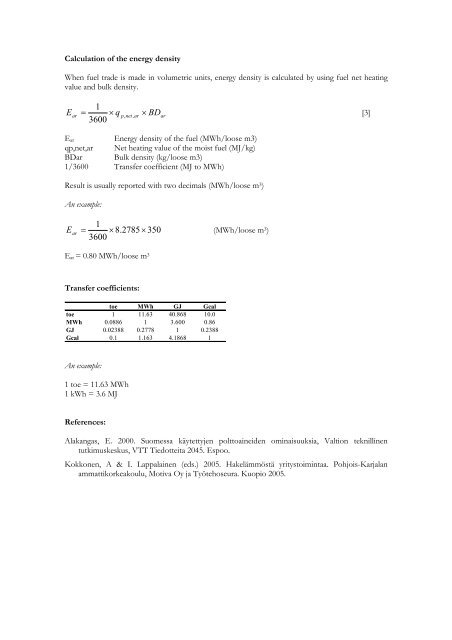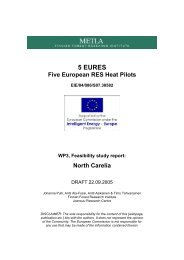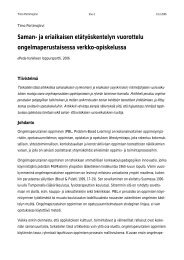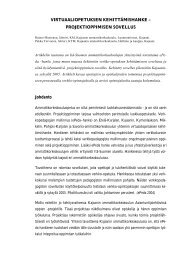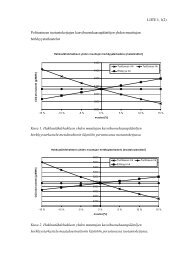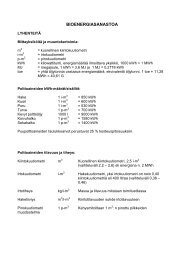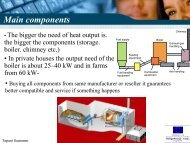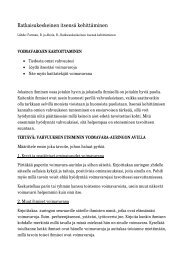Calculation principles
Calculation principles
Calculation principles
You also want an ePaper? Increase the reach of your titles
YUMPU automatically turns print PDFs into web optimized ePapers that Google loves.
<strong>Calculation</strong> of the energy density<br />
When fuel trade is made in volumetric units, energy density is calculated by using fuel net heating<br />
value and bulk density.<br />
1<br />
E ar = × q p,<br />
net,<br />
ar × BD<br />
3600<br />
Ear Energy density of the fuel (MWh/loose m3)<br />
qp,net,ar Net heating value of the moist fuel (MJ/kg)<br />
BDar Bulk density (kg/loose m3)<br />
1/3600 Transfer coefficient (MJ to MWh)<br />
ar<br />
Result is usually reported with two decimals (MWh/loose m 3)<br />
An example:<br />
1<br />
E ar = × 8.<br />
2785 × 350<br />
(MWh/loose m<br />
3600<br />
3)<br />
Ear = 0.80 MWh/loose m 3<br />
Transfer coefficients:<br />
toe MWh GJ Gcal<br />
toe 1 11.63 40.868 10.0<br />
MWh 0.0886 1 3.600 0.86<br />
GJ 0.02388 0.2778 1 0.2388<br />
Gcal 0.1 1.163 4.1868 1<br />
An example:<br />
1 toe = 11.63 MWh<br />
1 kWh = 3.6 MJ<br />
References:<br />
Alakangas, E. 2000. Suomessa käytettyjen polttoaineiden ominaisuuksia, Valtion teknillinen<br />
tutkimuskeskus, VTT Tiedotteita 2045. Espoo.<br />
Kokkonen, A & I. Lappalainen (eds.) 2005. Hakelämmöstä yritystoimintaa. Pohjois-Karjalan<br />
ammattikorkeakoulu, Motiva Oy ja Työtehoseura. Kuopio 2005.<br />
[3]


